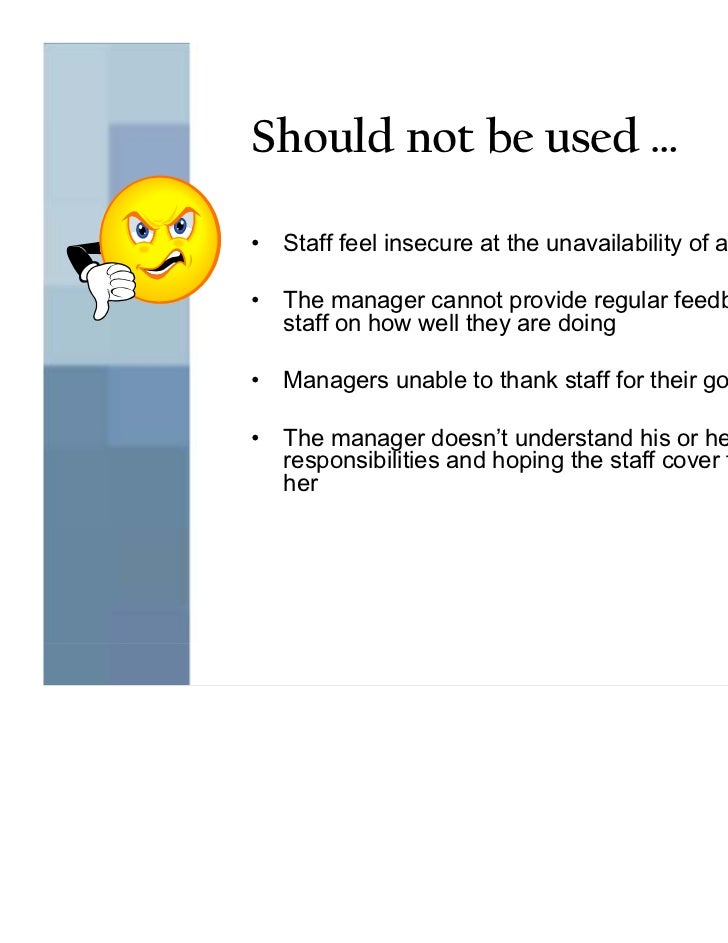
Her campaign never really had a message and she never answered the question why she wanted to be the next U.S. She left the running of her campaign to staffers, outside experts, and long-term friends.

The best example of a hands-off leader is Hillary Clinton. This can lead to serious problems when the relevant experience of the staff is inadequate or when their personal integrity goes unchecked. In such circumstances, running of the organization is left to those at the staff level often a de facto decision by the senior leader. On the other hand, hands-off leaders are more concerned about their personal status and privileges. Laissez-faire leaders monitor the performance of their employees, give regular feedback, and provide a positive work environment where good work can be accomplished with minimal interference. Largely, such a slide is due to a leader whose self-interest reinforces their executive laziness. On the one hand, laissez-faire leadership styles can slip into hands-off leadership easily.

To the military, hands-off leadership is an abomination to good order and discipline those soldierly traits needed in war and peace. military, as an institution, is concerned about the recent cultural shift toward advancing this type of leader. This type of leader is rarely discussed but is more common than most of us would like to admit. Today, I refer to hands-off leaders as those leaders who know what is happening, are not directly involved, trust others to do a good job, but also are who are unwilling to make decisions. So anytime he might be required to work with team members that he might rub up the wrong way, I would send him to work on his own in the customer facing areas, maintaining a happy and effective team.Hands-off leadership, incorrectly referred to as Laissez-Faire leadership, is a topic of intense debate in senior military circles. I had a member of staff once who could be volatile in staff group situations and yet his customer facing skills were second to none. You need to understand each team members’ strengths and weaknesses too. Patience with team members who could be slow to pick up a skill or have differing opinions on the best way to tackle a job. Patience and understanding are an essential part of hands off management. Explain how you got to these decisions, be ready to receive new ideas and potentially better ways of working. You also need to be open to new ideas from your team, when they ask ‘why’ about processes and procedures. Your staff will add their own style to the finished product, and provided it works, this might not always be an issue.
#HANDS OFF MANAGEMENT STYLE PLUS#
Plus you’ll save lots of time in the long run!Īlthough, there does need to be an understanding from you as the manager even though you might have delegated the task in a certain way with certain parameters. This may seem like a lot to do, but it’s all time well spent that you will get back in employee satisfaction and the development of the team. Your team is there to save you time and allow you to focus on the ‘grand vision’, however there needs to be some time taken to explain the task, define expectations and space made for potential errors.

There needs to be an element of trust, delegation, patience and understanding.

Unfortunately you no longer have the time to monitor every single thing that happens under your leadership. You‘ve probably worked your way through the ranks and understand how everything works and how you want things done, right down to the finest details. You’ve made it! You’re a manager! The world is your oyster and there are minions all around you ready to do your bidding! However, with great power comes great responsibility. Simon talks ‘hands off’ management and why it’s so important for creating a happy and healthy workplace culture.


 0 kommentar(er)
0 kommentar(er)
